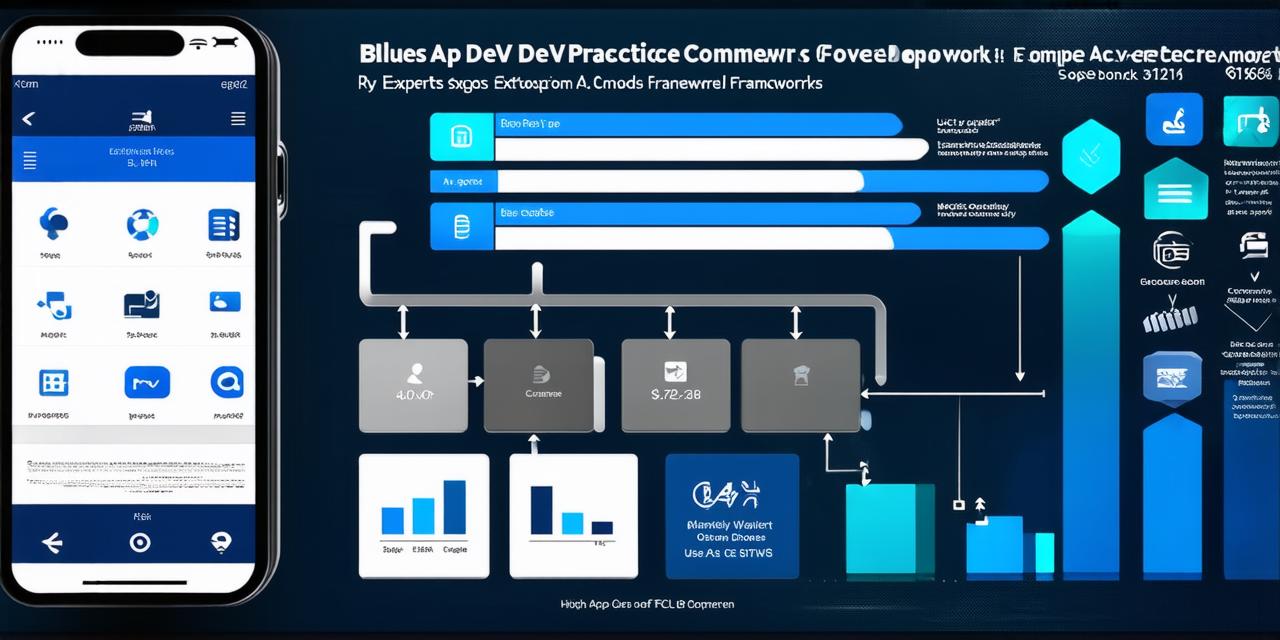What is the most effective framework for developing mobile applications?
As a mobile app developer, you know that choosing the right framework is essential to ensure the success of your project. There are several frameworks available, each with its own advantages and disadvantages.
1. React Native
React Native is a popular open-source JavaScript library developed by Facebook that allows developers to create native mobile apps using a single codebase. This framework uses a bridge to communicate between the JavaScript code and the native platform APIs, which makes it possible to develop apps for both iOS and Android platforms with a single set of code.
React Native is known for its flexibility, performance, and ease of use. It also supports a wide range of components and libraries that can be used to create complex user interfaces and integrations with third-party services. One of the biggest advantages of React Native is that it allows developers to reuse existing code, which can save time and effort in development.
One real-life example of an app developed using React Native is Instagram, which was built using this framework.
2. Flutter
Flutter is another open-source mobile development framework developed by Google. It uses the Dart programming language and allows developers to create cross-platform apps for both iOS and Android using a single codebase. Flutter is known for its fast performance, high-quality graphics, and ease of use.
Flutter also supports a wide range of features, such as animations, navigation, and user interfaces, which makes it possible to create complex apps quickly. One of the biggest advantages of Flutter is that it uses its own rendering engine, which allows for more efficient code and faster performance than other frameworks that rely on third-party engines.
One real-life example of an app developed using Flutter is Google’s own Material Design Guidelines app, which was built using this framework.
3. Xamarin
Xamarin is a popular cross-platform mobile development framework developed by Microsoft. It uses C or VB.NET as its programming language and allows developers to create apps for both iOS and Android platforms using a single codebase. Xamarin also supports the use of existing .NET libraries, which makes it possible to reuse existing code from other projects.
Xamarin is known for its ease of use, performance, and compatibility with existing development tools and environments. It also supports a wide range of features, such as animations, navigation, and user interfaces, which makes it possible to create complex apps quickly.
One real-life example of an app developed using Xamarin is Microsoft’s own Office Lens app, which was built using this framework.
4. Ionic
Ionic is an open-source mobile development framework developed by Apache Software Foundation that allows developers to create cross-platform apps for both iOS and Android using a single codebase. It uses HTML, CSS, and JavaScript as its programming languages and relies on Cordova, an open-source platform that provides a bridge between the web and native platforms.
Ionic is known for its ease of use, flexibility, and compatibility with existing development tools and environments. It also supports a wide range of features, such as animations, navigation, and user interfaces, which makes it possible to create complex apps quickly.
One real-life example of an app developed using Ionic is the popular weather app called Weather Underground, which was built using this framework.
5. NativeScript
NativeScript is an open-source mobile development framework developed by Progress Software that allows developers to create cross-platform apps for both iOS and Android using a single codebase. It uses TypeScript as its programming language and supports the use of existing JavaScript libraries, which makes it possible to reuse existing code from other projects.
NativeScript is known for its fast performance, high-quality graphics, and ease of use. It also supports a wide range of features, such as animations, navigation, and user interfaces, which makes it possible to create complex apps quickly. One real-life example of an app developed using NativeScript is the popular banking app called CIBC Mobile Banking, which was built using this framework.
Choosing the Right Framework for Your Project
When choosing a framework for your mobile application project, it’s important to consider the following factors:
- Performance: Look for a framework that provides fast performance and smooth animations, especially if you are developing apps with complex user interfaces or high-performance requirements.
- Compatibility: Make sure that the framework you choose is compatible with your target platforms and development tools and environments.
- Flexibility: Choose a framework that allows for flexibility in design and functionality, especially if you expect your app to evolve over time.
- Ease of use: Look for a framework that is easy to learn and use, especially if you are new to mobile app development.
- Reusability: Consider using a framework that allows for the reuse of existing code from other projects, which can save time and effort in development.
FAQs
1. What is the best framework for developing cross-platform mobile applications?
The choice of framework will depend on the specific requirements of your project. However, some popular options include React Native, Flutter, Xamarin, Ionic, and NativeScript.
2. Should I use a native or cross-platform framework for my mobile app development project?
It depends on the specific requirements of your project. If you need to develop an app that has complex user interfaces or high-performance requirements, a native framework may be better. However, if you need to develop an app quickly and with minimal resources, a cross-platform framework may be more suitable.
3. What is the difference between React Native and Flutter?

React Native uses JavaScript and relies on a bridge to communicate with the native platform APIs, while Flutter uses its own rendering engine and supports Dart as its programming language. Flutter also has a faster performance than React Native due to its use of its own rendering engine.
